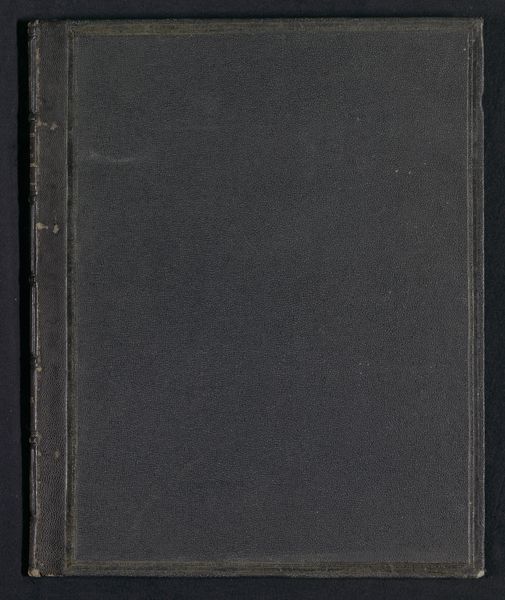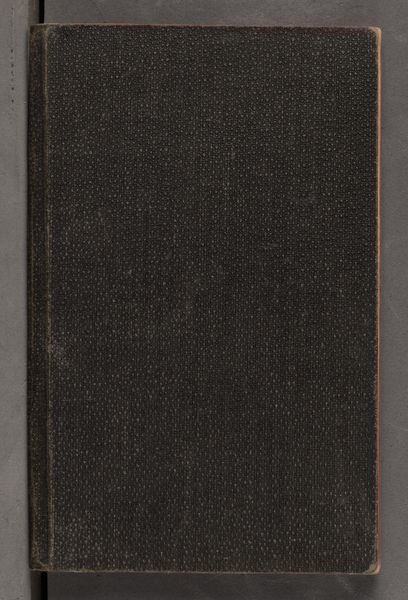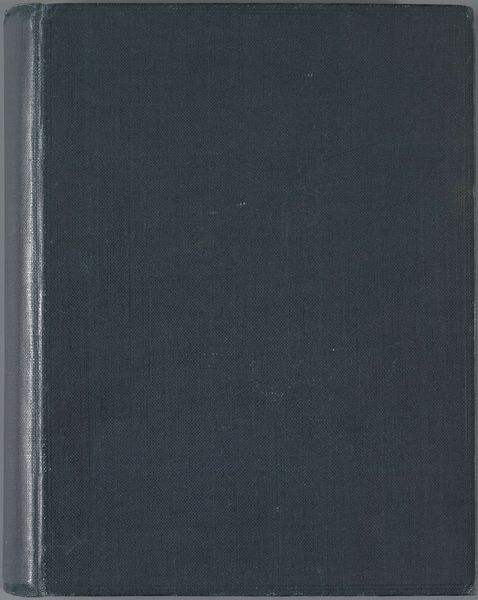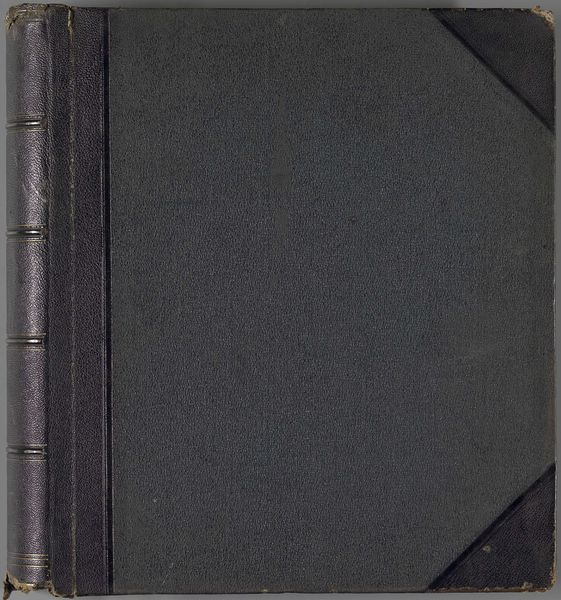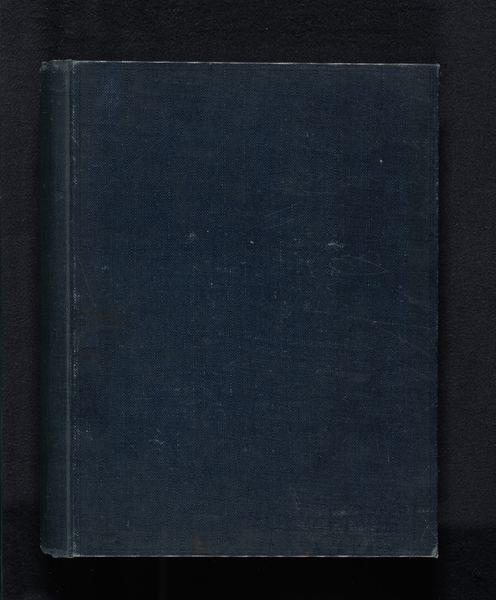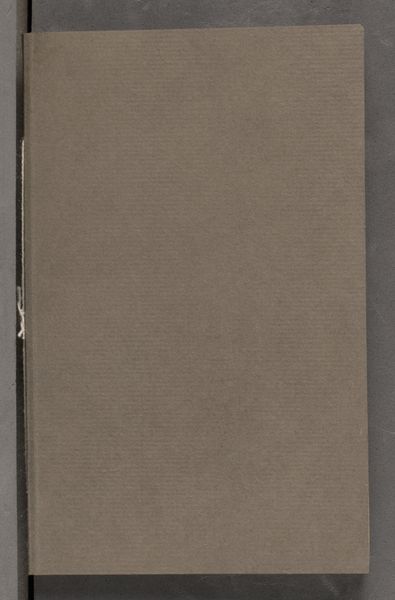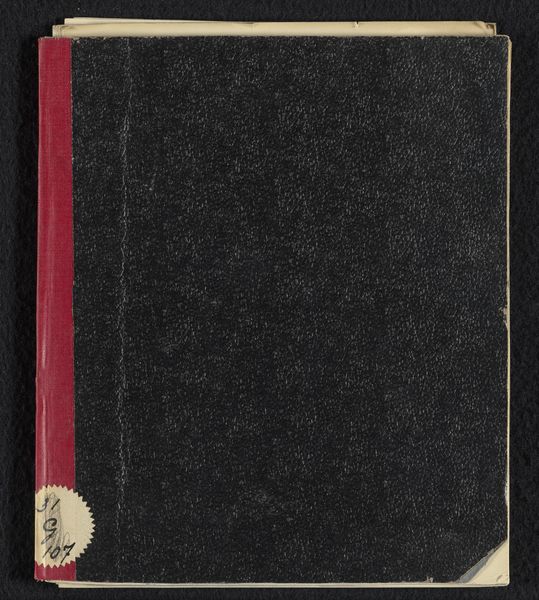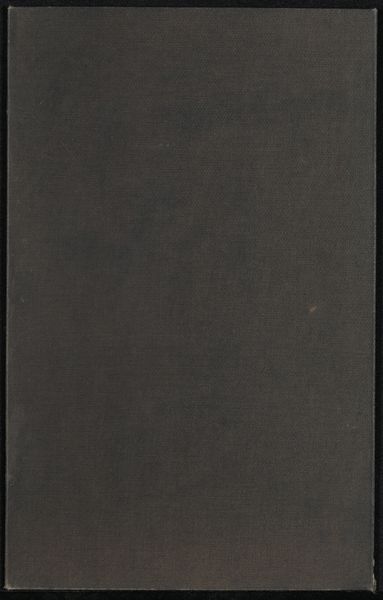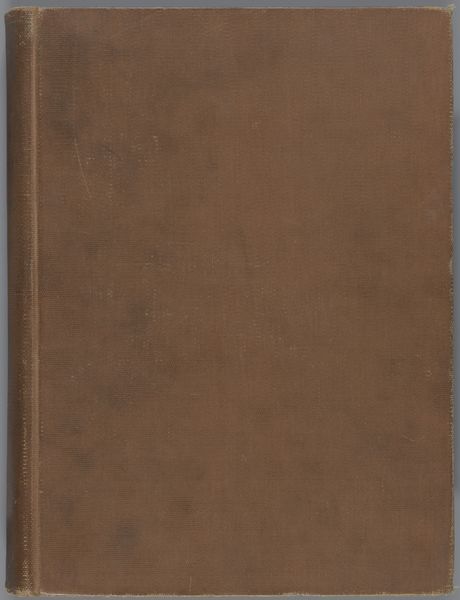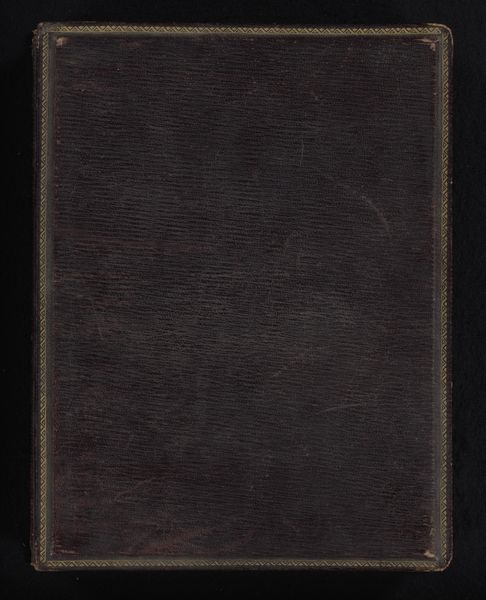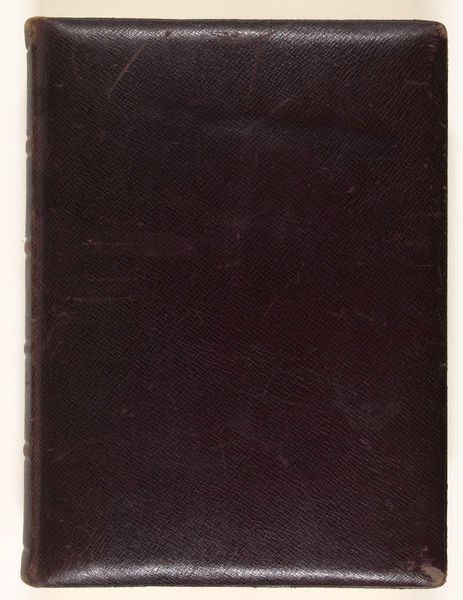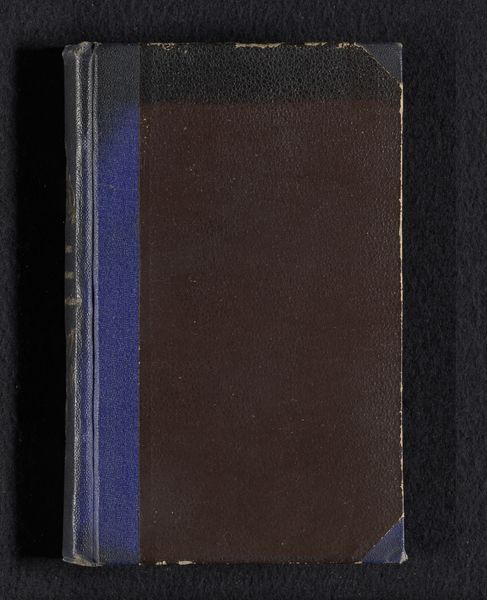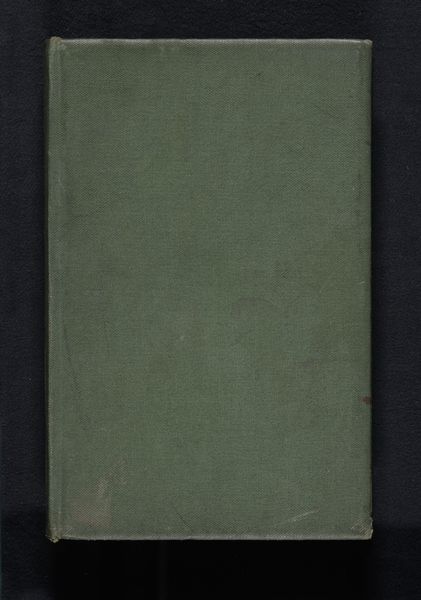
drawing, paper
#
drawing
#
paper
Dimensions: overall: 21.7 x 14.3 x 2 cm (8 9/16 x 5 5/8 x 13/16 in.)
Copyright: National Gallery of Art: CC0 1.0
Editor: Here we have "Larry Day Sketchbook," made around the 1950s. The cover appears to be a dark material, maybe leather, contrasting with the pale edge of the paper within. What's fascinating to you about its visual structure? Curator: The sketchbook, as an object, possesses an inherent formalism. Observe the rectangular composition. The stark contrast between the dark cover and the light paper edge creates a visual tension, almost a binary opposition. Consider the texture; the potential for varied mark-making held within those blank pages. Editor: That’s true; it's the potential that's intriguing. What could a close analysis of the cover's texture suggest? Curator: The texture invites tactile contemplation. The implied variations hint at the physical process, the potential actions involved in creating the images that lie unseen, while the smooth regularity suggests a method. Consider, too, the deliberate compositional choices: the positioning of the spine, the frame it creates. Editor: I never thought a sketchbook cover could reveal so much through pure form! It makes me think differently about how even mundane objects are composed. Curator: Precisely! The seemingly simple can be rich in structural elements and relationships. The limitations are equally interesting as it offers us little context for what exists on the interior. We can study the use of implied and open form of design. Editor: I appreciate you highlighting how even something so seemingly basic as a sketchbook cover has intrinsic value! Curator: Yes! Analyzing the structural elements, textures, and implicit forms allows a far greater knowledge to understanding it and its potential!
Comments
No comments
Be the first to comment and join the conversation on the ultimate creative platform.

